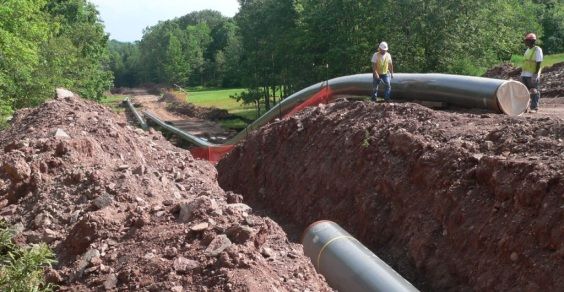Pipeline Construction Steps
Video: Typical Stages of Pipeline Construction (3:25) This video is not narrated.
Click here for text description of Typical Stages of Pipeline Construction.
Typical Stages of Pipeline Construction
- Landowners are contacted
- Design, permits & approvals
- Right of way is prepared
- Topsoil is separated
- Special river crossing techniques
- Environment Protection Measures
- Crews string out pipe sections
- Trenches are dug
- Welders join the pipe sections
- All Welds are Inspected
- Pipe is lowered into the trench
- Soil is replaced
- Hydrostatic testing and inline inspection is completed
- Land is restored
Enbridge (logo): Delivering Secure North American Petroleum
Credit: ProVideoDuluthMN
After a pipeline operator obtains the required permits and satisfies the regulatory requirements, construction of the pipeline may begin. Surveying of the intended route is completed, both aerial and land-based, to ensure that no surprises arise during the actual assembly of the pipeline.

Figure 6.21: Pipeline being installed.
Source: Dave Messersmith
Pipeline Construction Process
- Planning route, surveying
- Permitting
- Acquiring the right of way (ROW)
- ROW is cleared
- Topsoil removed, a trench dug
- "Stringing Pipe"
- Pipe is welded and contoured
- Pipe is lowered into a trench
- Pipe is placed underground and the site is restored
Source: Penn State Extension